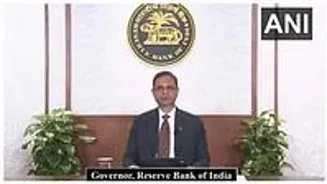What is the story about?
The Reserve Bank of India (RBI) has issued revised guidelines to tighten co-lending arrangements between banks and non-banking financial companies (NBFCs), effective January 1, 2026. The updated framework aims to
strengthen transparency, accountability, and risk-sharing in the co-lending ecosystem.
Under the new rules, each regulated entity (RE) in a co-lending arrangement must retain at least 10% of every individual loan on its own books. This change applies uniformly to both banks and NBFCs participating in co-lending agreements.
The RBI also permits the loan-originating entity to provide a default loss guarantee (DLG) of up to 5% of the total outstanding loans under the arrangement. The regulator has asked all REs to reflect these
changes in their credit policies and to frame dedicated internal guidelines on key elements such as target borrowers, internal portfolio limits, fees, partner due diligence, customer service, and grievance redressal mechanisms.
The central bank emphasised that entities involved in co-lending must make clear upfront disclosures about their roles and responsibilities in the partnership.
Importantly, RBI has mandated a borrower-level asset classification for such arrangements. If one lender classifies a borrower as a
Special Mention Account (SMA) or non-performing asset (NPA) due to default, the same status must be adopted by the co-lending partner for its share of the exposure. Both entities must also share relevant credit information on a near real-time basis, and no later than the end of the next working day.
The regulator’s move aims to enhance coordination and reduce arbitrage in loan performance classification under co-lending agreements.
Commenting on the development, Joydip Gupta, APAC Head at Scienaptic, said,
“The co-lending guidelines issued by RBI mark a significant milestone towards nurturing the credit ecosystem in the country. With rules like the 10% retention, DLG cap, and loan transfer timelines, the collaboration between banks and NBFCs has become more equitable and the competition more constructive.”
He added that specialized NBFCs will now be better positioned to tap into cheaper bank funding to serve markets previously underserved. "While margins may be affected by blended interest rates and retention norms, the clarity and
flexibility introduced by RBI open doors to more intelligent and durable credit models," Gupta said.
He also noted that the changes would help extend formal credit to underbanked segments, particularly MSMEs and thin-file borrowers, with the potential for faster and more inclusive lending through AI-powered partnerships.
Under the new rules, each regulated entity (RE) in a co-lending arrangement must retain at least 10% of every individual loan on its own books. This change applies uniformly to both banks and NBFCs participating in co-lending agreements.
The RBI also permits the loan-originating entity to provide a default loss guarantee (DLG) of up to 5% of the total outstanding loans under the arrangement. The regulator has asked all REs to reflect these
The central bank emphasised that entities involved in co-lending must make clear upfront disclosures about their roles and responsibilities in the partnership.
Importantly, RBI has mandated a borrower-level asset classification for such arrangements. If one lender classifies a borrower as a
The regulator’s move aims to enhance coordination and reduce arbitrage in loan performance classification under co-lending agreements.
Commenting on the development, Joydip Gupta, APAC Head at Scienaptic, said,
He added that specialized NBFCs will now be better positioned to tap into cheaper bank funding to serve markets previously underserved. "While margins may be affected by blended interest rates and retention norms, the clarity and
He also noted that the changes would help extend formal credit to underbanked segments, particularly MSMEs and thin-file borrowers, with the potential for faster and more inclusive lending through AI-powered partnerships.
Do you find this article useful?
















